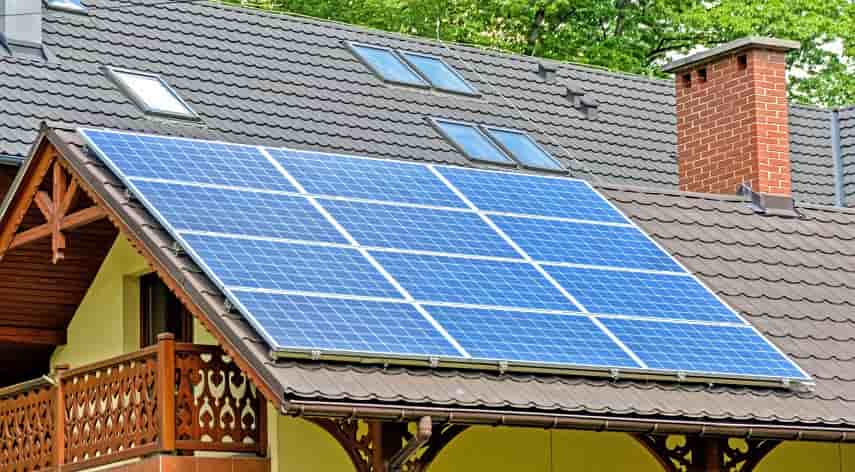Best Solar Panel Placement

Are you considering installing solar panels in your home or business? If so, then you’re taking a step towards sustainability and saving money on energy costs.
However, before you start the solar panel installation process, it’s essential to ensure that your solar panels are placed in the right location. Solar panel placement can make or break the efficiency of your system. It’s crucial to get it right from the beginning.
In this blog post, we’ll cover everything you need to know about solar panel placement. So, let’s dive in!
Table of Contents
ToggleConsidering Orientation
The orientation of your solar panels refers to their direction about the sun. The ideal orientation depends on your location and the season.
Generally, you want your solar panels to face south if you’re in the northern hemisphere. You also want to have it face north if you’re in the southern hemisphere. This allows them to receive maximum sunlight throughout the day.
If possible, try to avoid placing solar panels facing east or west. This is because they will only receive sunlight for part of the day and won’t produce as much electricity.
Remember also that magnetic declination varies depending on where you are located. So it is essential always to check which direction suits best. You can do this by consulting with professionals who know how things operate regarding geographic location.
Having the Right Tilt Angle
Having the right tilt angle for your solar panels is crucial. This helps for maximizing their efficiency and energy production. The ideal tilt angle varies depending on a few different factors like your:
- location
- latitude
- season
In general, the best tilt angle for solar panels in the Northern Hemisphere is equal to your latitude plus 15 degrees during the winter months. On the other hand, it’s minus 15 degrees during the summer months. This allows for maximum sunlight exposure throughout the year.
It may be beneficial to adjust your panel’s tilt angle accordingly. This is if you live in an area with more extreme seasons or have specific shading conditions on your property. You can determine what’s best for your specific situation by:
- working with a professional installer
- using online tools
- using calculators
It’s important to note that adjusting panel angles can impact wind resistance and the overall durability of installations. So make sure to consult a professional before making any changes to ensure the long-term success of your solar system. If you are not sure how solar installers work, discover more.
Factoring in Shading
One of the factors that should be considered is shading. Shading can significantly affect the efficiency of your solar panels. Even partial shading on one or more panels can reduce the entire system’s energy output. This could lead to total power loss in some cases.
Therefore, it’s essential to understand how shading affects your solar panel performance and plan accordingly. To minimize the effect of shading on solar panel performance, you must choose an optimal location for installation. This means choosing a spot with minimal obstructions, such as:
- trees
- buildings
- other structures
These may cast shadows and block sunlight from reaching your panels. It’s also important to note that seasonal changes can have an impact on shade patterns as well. For example, trees might not cause any issues during winter months but could obstruct sunlight during summer months when their leaves are fully grown.
Another approach is installing micro-inverters. This allows individual panels to operate independently and avoid losses due to shaded parts of arrays affecting areas exposed directly to sunlight.
Considering Roof Material
The type of material your roof is made of can affect the efficiency and lifespan of your solar panels. If you have a shingle or asphalt roof, you’re in luck.
These materials are great for supporting solar panels. This is because they have a long lifespan and are easy to work with during installation. Metal roofs are also ideal since they tend to last longer than other roofing materials. Plus, they provide a smooth surface for mounting panels.
However, if you have a tile or slate roof, it may be more difficult to install solar panels without causing damage. These types of roofs require special care during installation. This is because installers have to avoid cracking any tiles or slates.
It’s worth mentioning that flat roofs can make excellent locations for solar panel placement too. This is provided that there’s sufficient space available on the rooftop area which does not face north where possible.
Considering Wind Exposure
When it comes to solar panel placement, wind exposure is an important factor that should not be overlooked. Strong winds can cause damage to the panels and their mounting structure if they are not installed properly.
Before installing solar panels, it’s essential to assess the wind conditions of your area. Wind speed and direction play a crucial role in determining the ideal placement for your solar panels.
If you live in an area with high winds, it’s best to have your panels installed by a professional who has experience working with strong winds. They will ensure proper anchoring and mounting so that your system can withstand harsh weather conditions.
It’s also important to choose a sturdy material for the panel frame and mountings that can resist high-speed gusts of wind without damaging or bending over time.
Knowing the Height Requirements
When it comes to solar panel placement, height requirements are often overlooked. However, it’s important to consider the height of your solar panels for several reasons.
You want to make sure that your solar panels are installed high enough off the ground so that they won’t be damaged by animals or debris. This is especially important if you live in an area with a lot of wildlife or severe weather conditions.
You want to ensure that your solar panels receive ample sunlight throughout the day. By installing them at the right height, you can help maximize their exposure to sunlight and optimize their performance.
There may be local regulations or building codes regarding how high your solar panels can be installed. It’s important to consult with a professional installer who can advise on any such restrictions.
Be Aware of the Best Solar Panel Placement
The placement of your solar panels can have a huge impact on their efficiency. To ensure their performance, it’s important to make sure the panels are in clear sight from the sun and free from shade.
So, make the most of your solar panels and be aware of the best solar panel placement for optimal efficiency! Contact a certified solar installer today to find out more.
Visit our main blog for more!
Pankaj Majumder, a seasoned Civil Engineer, combines technical expertise with a passion for innovative infrastructure solutions. With a strong academic background and diverse project experience, he excels in creating sustainable and resilient structures that shape the future of urban development.
Recommended For You
Spread the loveInstagram is a visually driven platform, and understanding how aspect ratios work can significantly impact the success of
Spread the loveMobile hacking app hack the security vulnerabilities of a software system by pervasive or obstructing with the particular
Spread the loveEver wondered how blurry photos turn crystal clear? Or how small pictures magically transform into high-resolution images? Thanks



